What Is the Right Temperature for Poinsettias?
This is an important question. It’s a question that you need to think about before you bring your poinsettia home, too.
Jump to:
- Keep Poinsettias Warm When Buying and Transporting
- Tropical Poinsettias are Indoor Plants
- How warm should poinsettias be? What’s the best temperature for keeping poinsettias?
- What if my house isn’t that warm? Or, what if my house is too warm for poinsettias? Can I keep poinsettias?
- A few final important temperature tips for poinsettias.
Keep Poinsettias Warm When Buying and Transporting
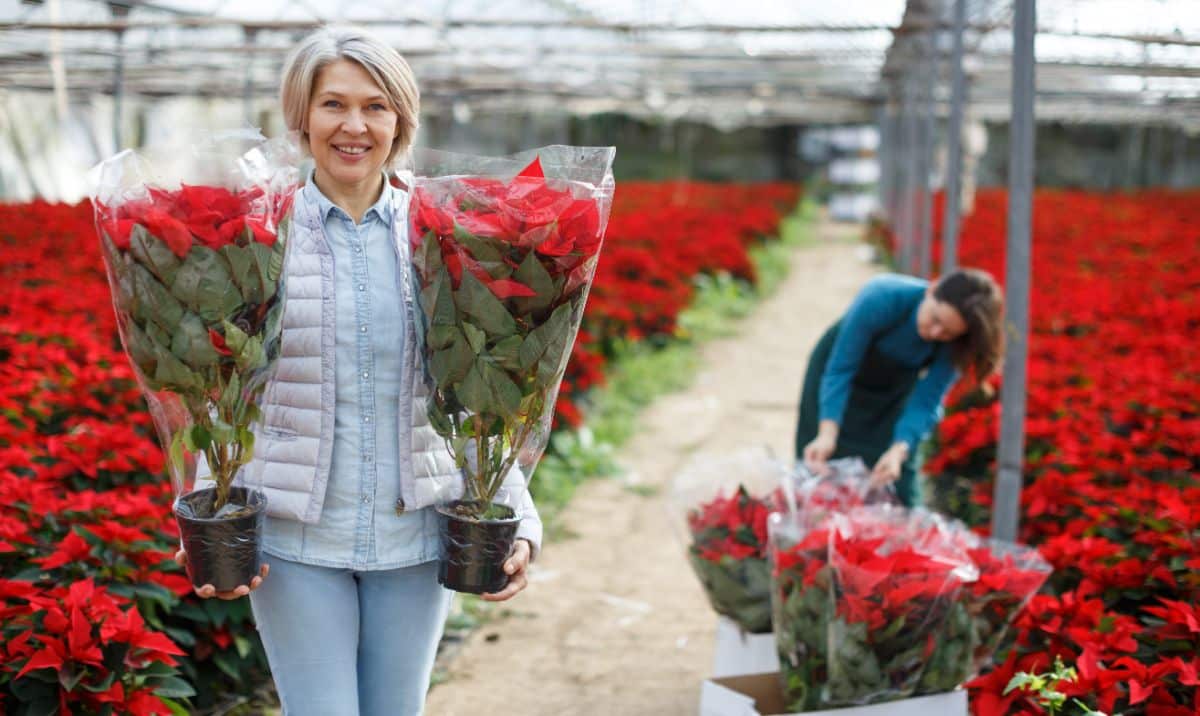
We don’t always think about how warm we need to keep poinsettias until we get them home, but we need to. Poinsettias are at a much bigger risk of shock and death when we are buying and transporting them than they are in our homes.
The reason for this is that our homes are at least comfortable enough for us to live in. Which means they are not cold enough to cause permanent damage to our poinsettia plants. But brief exposure to freezing temperatures, even if it is only the time it takes to walk from a store to your car, is enough to turn poinsettia leaves black and for them to die and fall off.
When you buy your poinsettias, wrap them before you take them outside. If floral bags or wraps are not available, use one or two shopping bags. Cover all the parts of the plant and make sure the plant is not exposed by a gaping or blowing bag. It is best if you can place one bag upside down over the top of the plant and set the covered plant into another bag to protect it from the bottom up.
Note that a decorative wrap that is open at the top is not enough to keep your poinsettia protected from outdoor cold, even if it extends up the sides of the plant. The plant needs to be covered on the top, too.
When you get your poinsettias out to your vehicle, put them in right away. Heat the car if you can while you load the rest of your shopping. Keep the plant up front with you, not in an unheated trunk, and never in the bed of a truck—that's far too cold of a ride for poinsettias.
Tropical Poinsettias are Indoor Plants
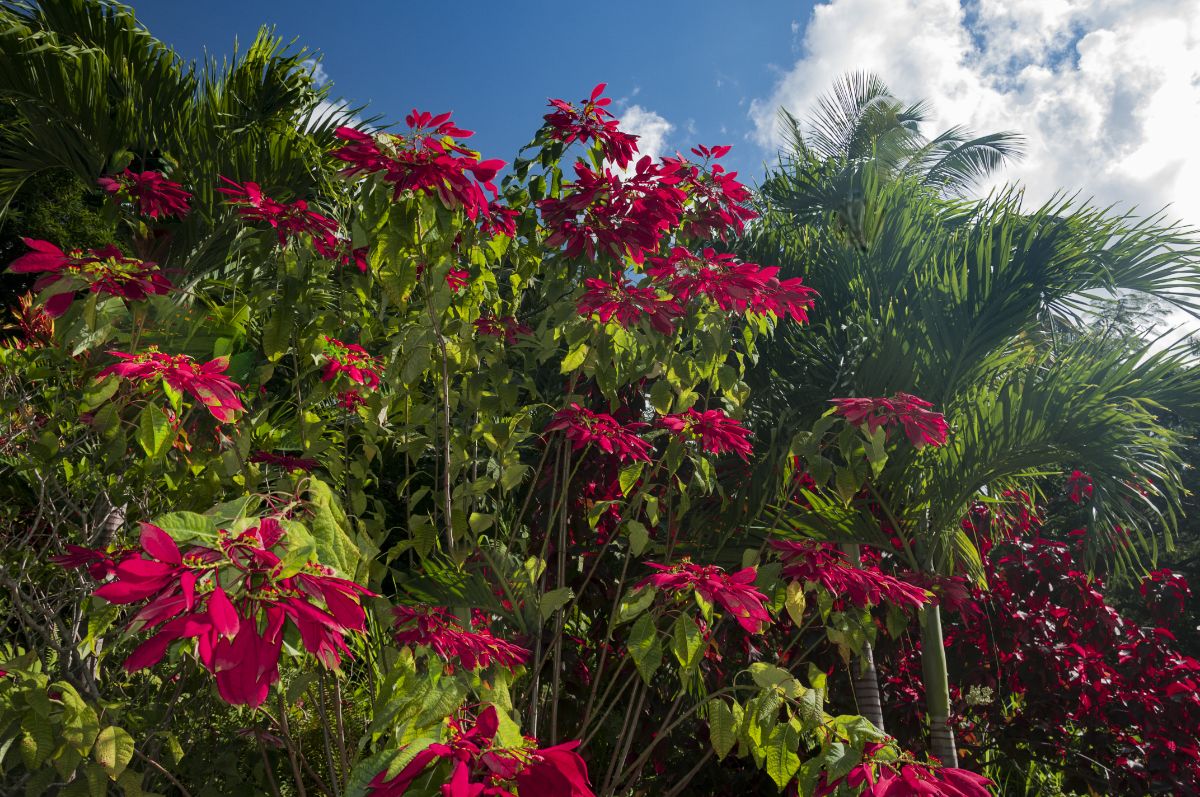
Unless you live in the tropics, poinsettias are for keeping indoors. They are not outdoor Christmas plants. They are not for keeping on porches or in window boxes. Poinsettias are not cold or frost-hardy, and in fact, they should not be exposed to temperatures below 50 degrees Fahrenheit (F). Low temperatures will shorten their bloom time and their life, at best, and kill them at worst.
If you really want the look of poinsettias outside, you’ll need to use artificial plants. Or better yet, choose a different native plant or berry for your outside decoration. Might we suggest winter berries?
How warm should poinsettias be? What’s the best temperature for keeping poinsettias?
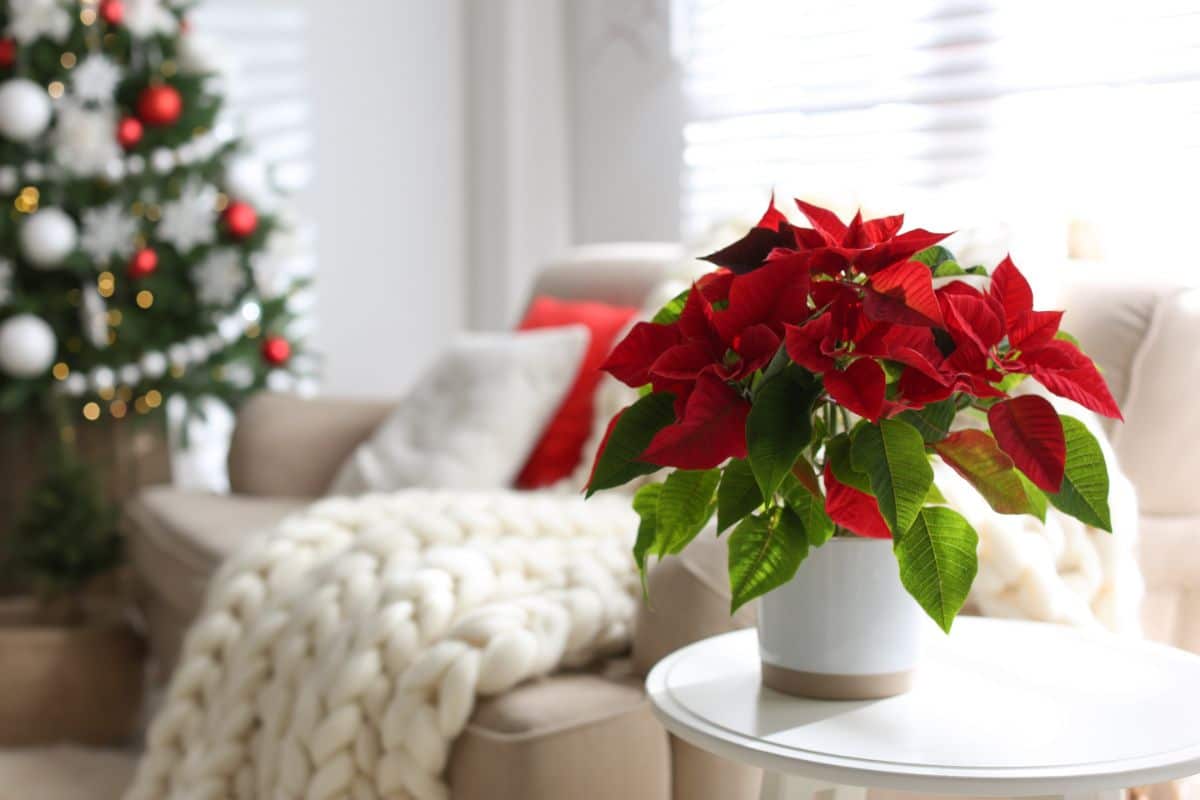
The best temperatures for keeping poinsettias happy and healthy are normal comfortable home temperatures. Specifically, a temperature range of 60 to 70 degrees Fahrenheit (about 16 to 21 degrees Celsius).
What if my house isn’t that warm? Or, what if my house is too warm for poinsettias? Can I keep poinsettias?
Few homes will have inside temperatures that are not in an acceptable range for keeping poinsettias. Even if you keep your home cool, a low 60-degree temperature will be comfortable for poinsettias.
As for warmer homes, there is not much to be concerned with here, though you should be aware that high temperatures affect the poinsettia blooms.
As mentioned, poinsettias are tropical plants. They’ll take your warmer-than-average home temperature just fine. They might need to be watered more often than usual. Do a quick check of your plant’s soil daily and water when the time is right.
A few final important temperature tips for poinsettias.
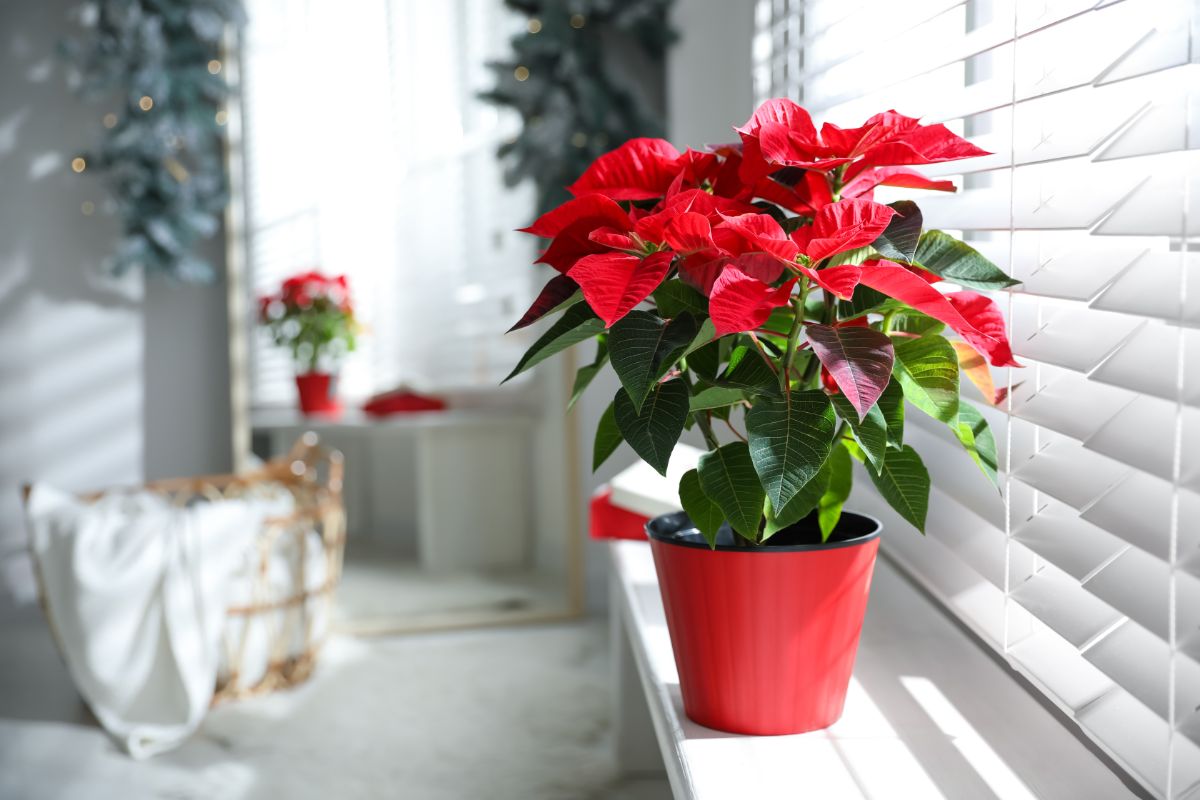
Keep poinsettias away from drafts—both hot and cold.
Warm drafts or blowing hot air can cause poinsettias to dry out too quickly and can make it difficult to keep the plants adequately watered. This can also cause the leaves to become dry and break or fall.
Try not to place your poinsettias too close to heaters, heat vents, stoves, or fireplaces.
Cold drafts can create pockets of blowing air that damage leaves and plant parts.
Don’t let poinsettias contact cold surfaces.
Even if the air temperature in your home is warm, cold surfaces like windows or glass doors can be cold enough to kill parts of your plant. If your poinsettia is near a window or door, make sure it doesn’t touch the glass. Keep enough area around your poinsettia so that it is not touching things like windowpanes.

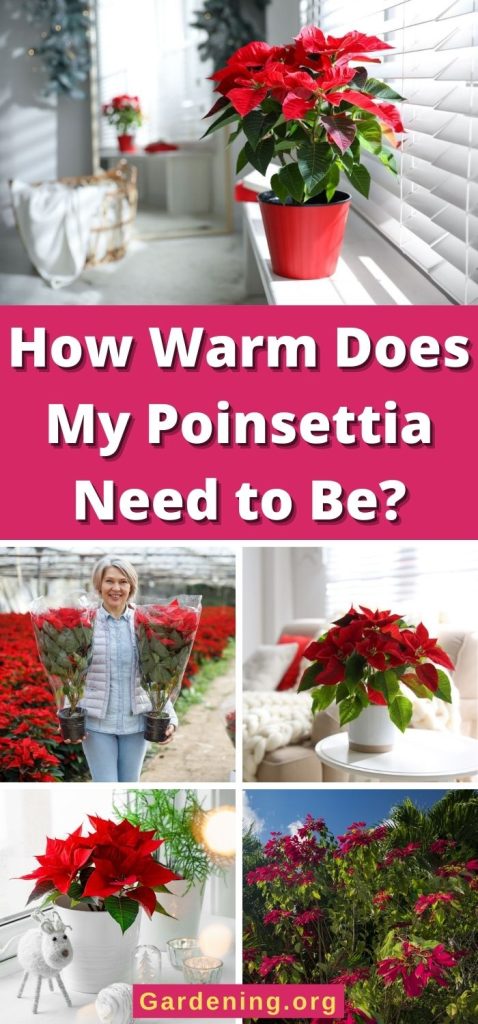
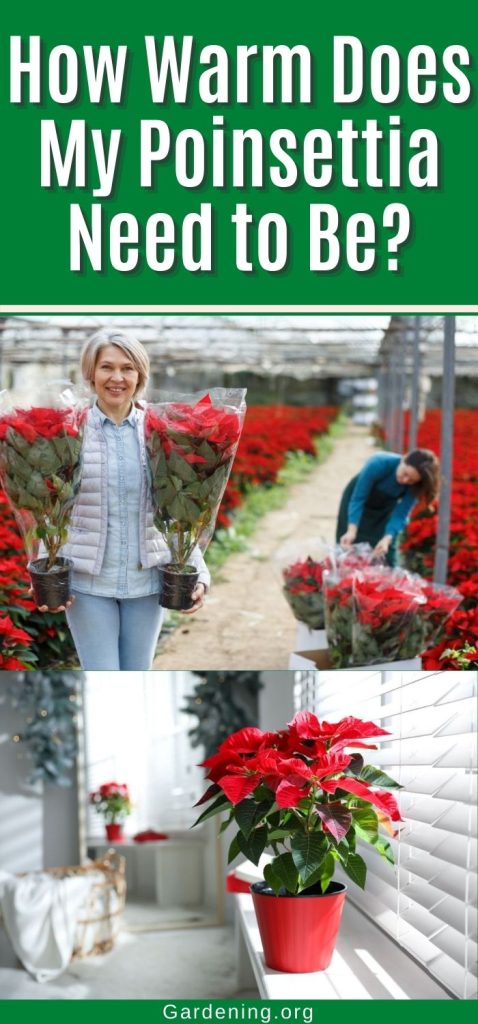
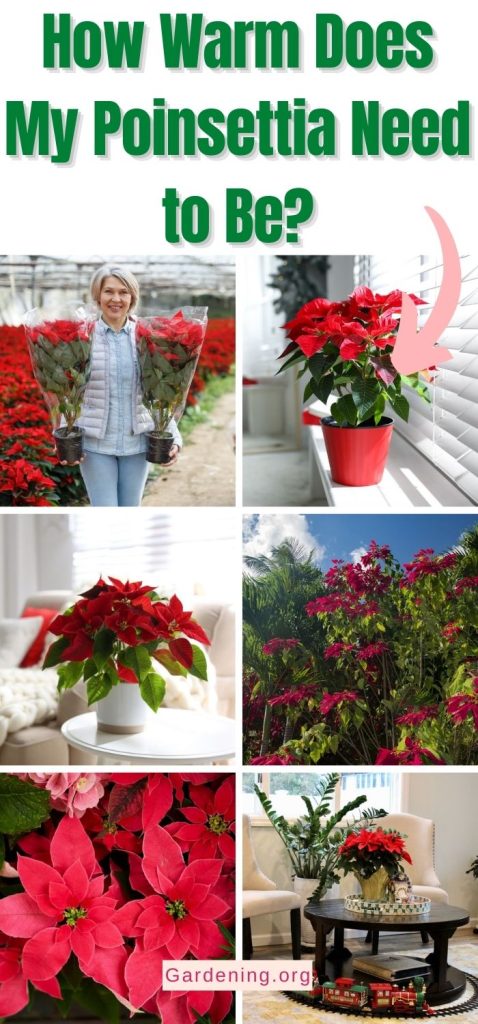
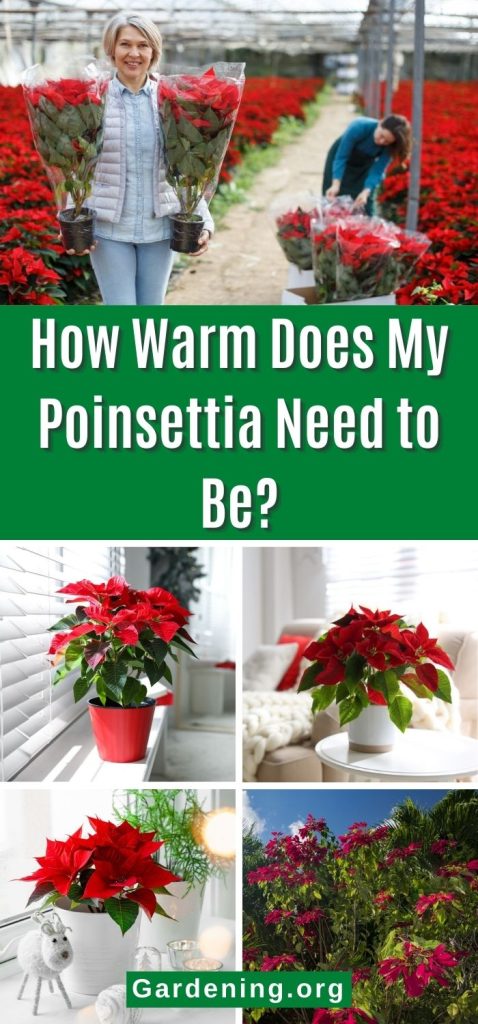
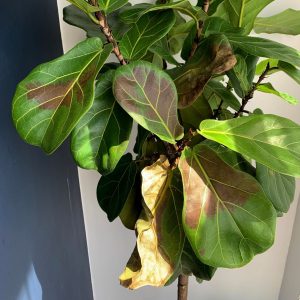
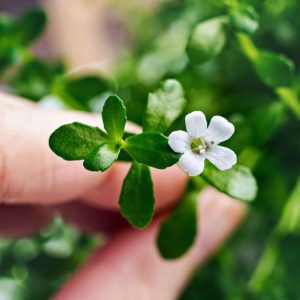
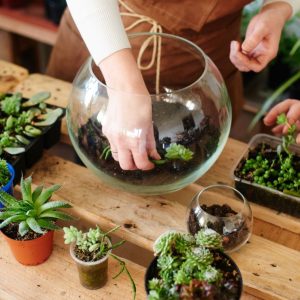
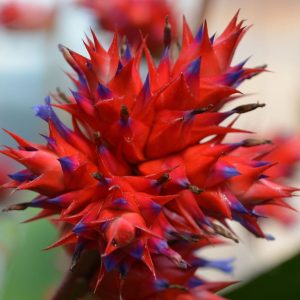
Leave a Reply